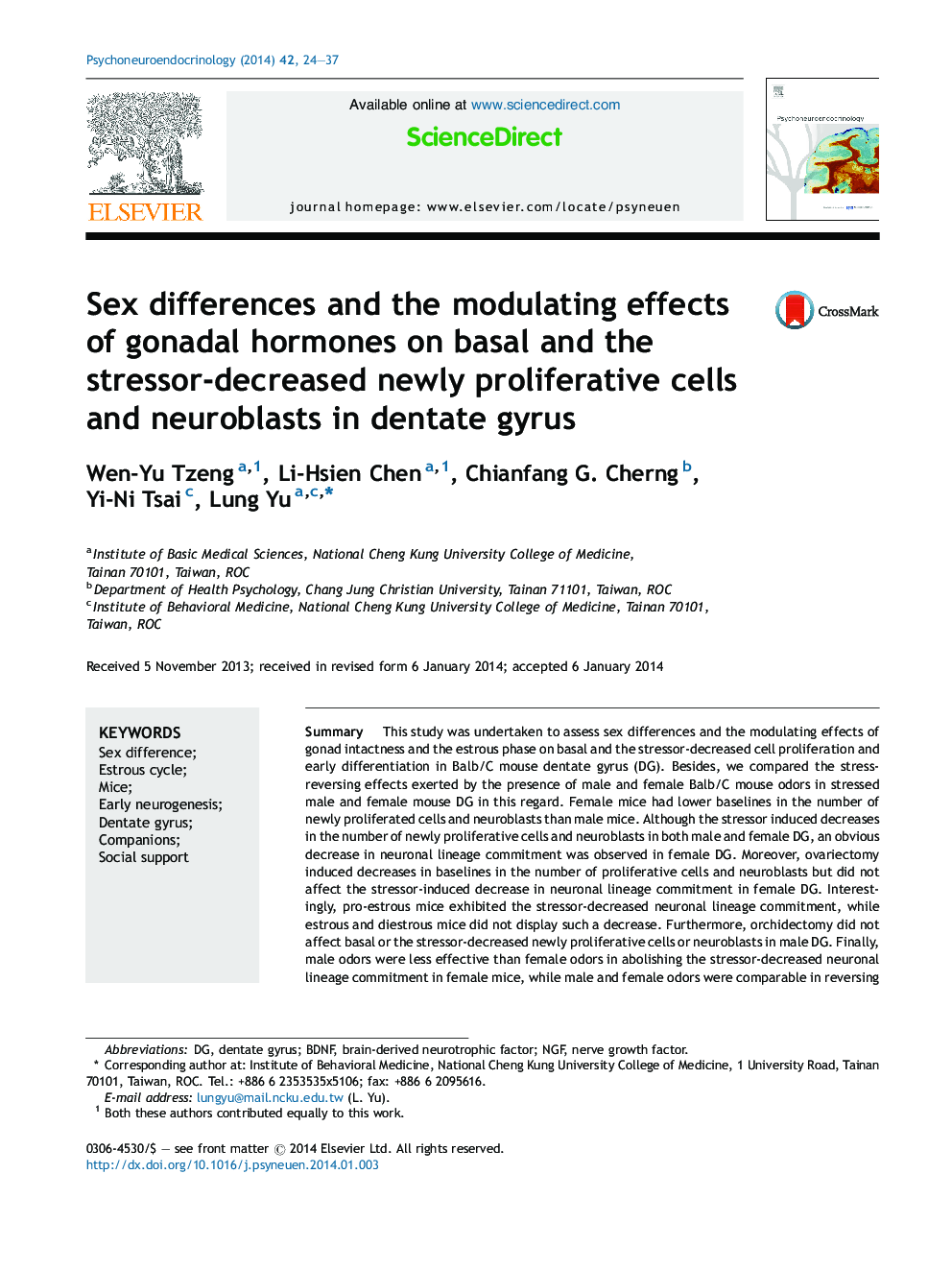| Article ID | Journal | Published Year | Pages | File Type |
|---|---|---|---|---|
| 336392 | Psychoneuroendocrinology | 2014 | 14 Pages |
SummaryThis study was undertaken to assess sex differences and the modulating effects of gonad intactness and the estrous phase on basal and the stressor-decreased cell proliferation and early differentiation in Balb/C mouse dentate gyrus (DG). Besides, we compared the stress-reversing effects exerted by the presence of male and female Balb/C mouse odors in stressed male and female mouse DG in this regard. Female mice had lower baselines in the number of newly proliferated cells and neuroblasts than male mice. Although the stressor induced decreases in the number of newly proliferative cells and neuroblasts in both male and female DG, an obvious decrease in neuronal lineage commitment was observed in female DG. Moreover, ovariectomy induced decreases in baselines in the number of proliferative cells and neuroblasts but did not affect the stressor-induced decrease in neuronal lineage commitment in female DG. Interestingly, pro-estrous mice exhibited the stressor-decreased neuronal lineage commitment, while estrous and diestrous mice did not display such a decrease. Furthermore, orchidectomy did not affect basal or the stressor-decreased newly proliferative cells or neuroblasts in male DG. Finally, male odors were less effective than female odors in abolishing the stressor-decreased neuronal lineage commitment in female mice, while male and female odors were comparable in reversing the stressor-decreased newly proliferated cells and neuroblasts in male mice. The protective effects of mouse odors’ company in the stressed male mouse DG were associated with local BDNF and NGF replenishment. Taken together, sexual differences in baselines in the number of newly proliferative cells, neuroblasts, and the sensitivity to stress-altered neuronal lineage commitment in the DG could be, in part, due to gonadal hormone differences between the two sexes. Mouse odors may reverse stressor-decreased newly proliferative cells and neuroblasts in male, but not in female, mouse DG by restoring BDNF and NGF levels.
